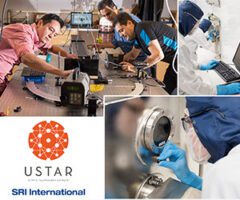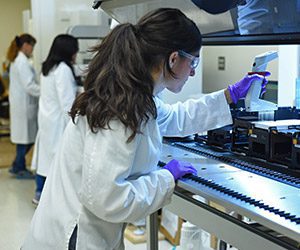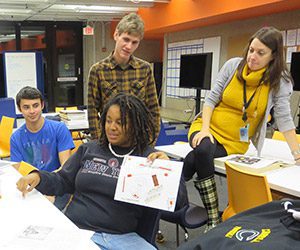Blog archive
-

Young Universities as Engines of Innovation
Universities the world over face pressure to contribute to the innovation-based economic development of the regions and nations that host them. This pressure is particularly acute for new universities – those established within the last few decades. Virtually all of these young schools were founded with the express purpose of accelerating local innovation. At the…
-

Can Adaptive Courseware Technology Positively Impact Student Learning Outcomes?
In higher education, if students fail to successfully complete the courses offered in the first few terms of school, they can jeopardize their dreams of a college degree. In two-year colleges, the courses representing the greatest hurdles are often developmental courses in English or math. In four-year colleges, they often are introductory courses in subjects…
-

New Report Highlights Key Findings from Next Generation STEM Schools Forum
In the 2015 State of the Union address, President Obama called for Next Generation High Schools. Next Generation STEM schools seek to intensify Science, Technology, Engineering and Math (STEM) opportunities, especially for historically underrepresented students. Such schools aim to strengthen STEM learning for all students who have a strong interest in STEM, regardless of their…
-

Playing the Long Game: Utah Renews Investment in its Innovation Ecosystem
Innovation—the process of creating new products and services and delivering them to customers—is tough. It’s tough, because the innovation process is nonlinear, requires adaptation, requires multiple skillsets, and engaging multiple stakeholders. Regions with strong innovation systems are well known, but where do states trying to build innovation systems start? Utah offers some good lessons. In…
-

Characteristics of Successful Inclusive STEM High Schools and their Impact on Student Outcomes
There has been a growing interest across the U.S. in expanding science, technology, engineering and math (STEM) opportunities for our nation’s youth through STEM-focused high schools – particularly for those groups who are under-represented in these high-growth fields (including minorities, females, and students from low-income families). Inclusive STEM high schools are designed to increase participation…
-

A New Approach to Fighting Flu
When most people hear the term “infectious disease,” it’s likely they think of illnesses that have been prominent in the news lately, such as Zika virus, MERS and Ebola. But there is a disease that poses a much broader and more imminent threat to most of us: influenza. Seasonal influenza viruses infect five to 20…
-

Meeting Strategic Army Client Requirements at Aberdeen Proving Ground
SRI engages strategic partners within the U.S. Army and the small business community to offer a new operational approach to moving information systems into sustainment. Our cost-effective, iterative, and seamless approach involves subject matter experts from across SRI’s multidisciplinary technology R&D focus areas. To expand our capabilities for Aberdeen Proving Ground (APG) clients, SRI’s Information…
-

Saving Energy, Building Skills: The Industrial Assessment Center Program
The Industrial Assessment Center (IAC) program from the Department of Energy provides energy efficiency assessments to small and medium‐sized manufacturers across the U.S. These assessments are in-depth evaluations of an industrial facility’s major energy-consuming systems, led by engineering faculty from 24 participating universities with the extensive involvement of graduate and undergraduate students. Since 1981 more…
-

Turning Autism Research into Support for Learning
34 percent of people who have autism and attend college end up being Science, Technology, Engineering or Math (STEM) majors, which is significantly higher than any other disability group and much higher than the general population, which is closer to about 20 percent.
-

Developing an Early Mathematics Assessment to Evaluate School Readiness for Young Learners
Preschool mathematics curriculum programs have been shown to have a positive impact on young children’s early mathematics learning.
-

Science and Engineering Indicators Give Policy Makers Better Information for Data-Based Decisions
The National Science Board recently released Science and Engineering Indicators (SEI) 2016, the premier source of quantitative information on the state of U.S. and international science, engineering, technology, and education. The report provides high-quality, objective data on a range of S&E indicators that help inform data-driven policy making. SRI managed the compilation of data for over 100 indicators…
-

Assessing the Value of Social Capital for Youth Across Multiple Learning Environments
Over the last several years, an area of focus in the education field has been to create pathways for youth to connect their learning experiences with their interests and future career opportunities–the idea being that students will be more engaged and invested in their education if it is relevant to them. Many of these pathways…